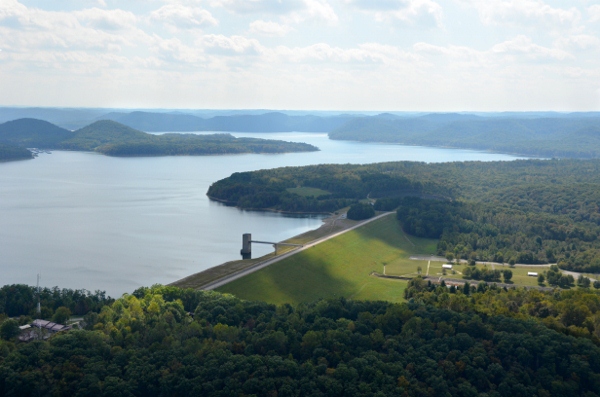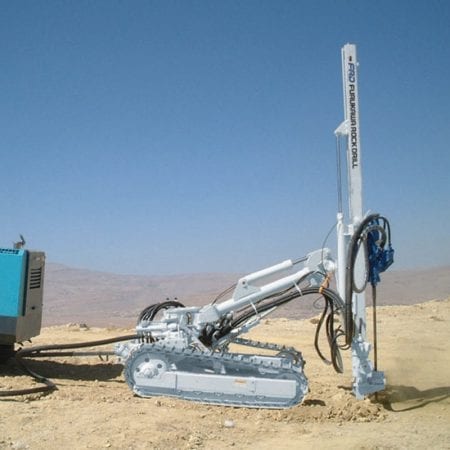Not your typical ice breaker
This is a story that I told several times during my working life, usually during one of those icebreaker exercises where you write something unusual about yourself on a piece of paper and everyone else has to guess who said it.
My slip of paper usually said, “I once worked on a blasting crew.” In a white collar office environment, that usually got some attention.
Here’s the story
In the summer of 1972 I was 18 years old. I had finished my freshman year of college in east Tennessee and was back home in Morehead, Kentucky. I had nearly flunked out of Honors English and Honors History. Those classes required a level of dedicated energy that I had reserved for drinking beer (which I excelled at) and trying to pick up girls (where I really did flunk out).
My next door neighbor, Oscar Turnage, got me a job on the construction crew building the Cave Run Dam. Oscar worked for the Army Corps of Engineers. I’m not sure what he did on the dam project, but he apparently had enough clout to get me hired into a union job site.
Today the dam sits at one end of an 8,000 acre lake. But in 1972, it was a half mile long pile of dirt. It was completed in 1974, well after my family moved to Alabama. I’ve never seen the completed dam or the lake, but it looks nice in pictures.

Image Source: US Army Corps of Engineers
I got assigned to the general labor crew – the guys who did all the grunt work. The kind that usually involved having a shovel in our hands. It was dirty, hot, mostly tedious work, often done on top of the dam while earth movers and bulldozers roared past.
It was also one of the most memorable jobs I ever had.
That was 50 years ago. Some of the experiences I had are etched indelibly in my memory. Others are lost. So, at best, I am an unreliable narrator.
~~~
The construction site was about 15 miles outside of Morehead. It took a half hour or so to get there, with the last couple miles being a narrow, two-lane road that wound through the forest. Day shift began at 7am. All of us on the labor crew would huddle around our foreman’s pickup truck in the parking lot. Mack, the foreman, would give us our assignments and then would drive us out to whatever area of the site we’d be working in that day.
One morning, Mack said to me, “Go with those guys”, and pointed to another truck with several men in the back. No introductions. Nothing. Typical. But it was early and who needs pleasantries?
I climbed into the back of the stake bed truck with 2 or 3 other men. We did introductions as we bounced down the dirt road. I don’t remember any of their names today. Like I said, I’m an unreliable narrator.
One of the guys was sitting on a stack of boxes, smoking a cigarette. It was early and I was tired, but I perked up quickly when I read the labels on the boxes. In big red letters, they said
DYNAMITE
I asked the guy if it was really dynamite in the boxes. He laughed and said it was. “Helluva way to get started in the morning, ain’t it?” He pointed to several spools of rope at the side of the truck. “That’s primer cord”, he said. “It’s like clothesline with gunpowder in the center.”
I was pretty rattled and couldn’t wait to get out of the truck. After a few minutes we arrived at a flat, open area and unloaded the explosives. The guys explained that they were the blasting crew and they were working on what would be the spillway of the dam. I was now part of the crew.
They had some machinery. There was a big diesel-powered air compressor mounted on a trailer. Also a “track drill”, a spindly kind of machine that moved on metal treads. It had a big drill bit – about 6” diameter – on the front and was connected to the compressor with a long air hose. A couple of the guys ran it. They drilled parallel rows of holes 8 or 10 feet apart over the length of the field. It was probably 50 yards long.
My job, and the job of another guy, was to load the holes with explosives. The other guy showed me the routine. We cut lengths of primer cord about 3 feet long. One end of each cord was taped to a stick of dynamite, which was then dropped into a hole, leaving the other end lying on the ground. Then we poured oxidizer into the hole.
Oxidizer, he explained, was basically chemical fertilizer (nitrogen) that had some diesel fuel added to it to make it unusable for crops. It came in big sacks – maybe 50 or 60 pounds each. (This was the same stuff that Timothy McVeigh used a truckload of to blow up the Federal Building in Oklahoma City 23 years later. ) We filled the holes to an inch or so from the top, then we packed dirt on top of it, leaving the end of the primer cord sticking up in the air.
When all the holes had been filled, one of the more experienced guys ran long strands of primer cord up and down the rows. The pigtails sticking out of the ground were tied to the long strands. The long cords were then extended some distance away, where the lead guy, known as the “powder man”, would attach them to the detonator.
~~~
Our powder man was an older guy everyone called Gramps. I didn’t have much interaction with him, but I remember driving him across the dam one morning. We got to a sort of intersection at one end where several dirt roads crossed. The earth movers hauling dirt to the top of the dam were passing us on each side. The full ones, ready to drop their loads, chugged by. The empties, headed back for more, moved a lot quicker. In our truck, we were the smallest thing on the road.
“Stop here”, he said.
I stopped the truck and expected to see him get out, but had no idea why.
Gramps looked out each side of the truck, and out the back window. Then he ducked down below the window level, opened up his black metal lunch box, and pulled out a half-pint of whiskey. He unscrewed the cap, sat up, and took a long drink. Then he stuck the bottle back in his lunch box, snapped it shut, and said “OK. Keep going.”
I put the truck in gear and pulled away.
Gramps told me he stopped at the bootlegger every afternoon as he drove home. He’d buy a half pint and drink some of it on the way home. Then he would save the rest for his mid-morning pick-me-up.
~~~
After a day or so, I got comfortable handling the dynamite and primer cord. I remember carrying a box of dynamite along the rows, dropping a fat stick next to each hole. “It’s inert. Can’t do nothin’ by itself”, the other guys told me. What did I know? I believed them.
But once all the cords were tied together, I got nervous. At that point it seemed like it wouldn’t take much of a mistake to blow us all up.
We worked for a few days getting several fields prepared to blast. I was looking forward to seeing the explosion…from a safe distance! But when the time came for the blast, Mack told me to drive a flatbed truck off the field and down the access road to another intersection. “Block the road with the truck. Don’t let anybody come this way”, he said.
When I parked the truck, I was disappointed to see that there was a copse of trees between my spot and the blast site. So all I could do was sit in the truck and wait to hear the explosion.
At 15 minutes before the scheduled blast time, an air whistle blew to alert everyone on site that a blast was about to happen. The whistle blew again at 5 minutes and then a final time with a minute to go.
I sat watching the trees, hoping to see something.
BOOM!
The blast went off. I couldn’t see anything. Damn it!
But a few seconds later I heard a whistling in the trees. Then big chunks of rock – 15 to 18 inches across – began falling all around the truck. I realized there was nothing between me and those rocks except the sheet metal of the truck cab and the yellow plastic hard hat I was wearing.
My hard hat had a sticker on the back that said
This equipment pays your salary.
Guy H. James Construction Co.
It might have paid my salary, but I doubted it would save my ass at that moment.
After the rocks stopped falling, I got out of the truck for a better look. And to stop shaking.
A minute or two later Mack drove up in his pickup. He got out, grinning, and said, “How’d you like that, Johnston? That’s some story you can tell your girl friend.”
Some story indeed.
I didn’t even have a girl friend.
And I sure as hell wasn’t going to tell my mother!
###
The featured image at the top is by Loren Elkin on pixabay.com.
Questions? Suggestions?
Leave a comment below with any questions or suggestions. I always appreciate feedback.
Mike

White Rabbit photo by Victor Larracuente on Unsplash


Great story Mike!
Fun to read that–we have something in common–As a kid in the 1940s I helped my dad blast stumps to clear land. I remember the shout,RUN!
I saw that your box said stumping on it–thx–Madaline (Ontario)
Whoa! What a great remembrance and wonderful story! Thanks for sharing that one although please don’t ask me to tell you any details of it since I’m an unreliable reader . . .
David